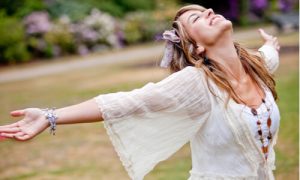When talking about women and back pain, a lot of people will think of the usual suspects. We opt to consider different factors, including physical exertion, accidents or injuries, active lifestyle, and other related causes. However, recent studies have shown that most women are more prone to postural issues due to a specific reason, which is their breast size. Breast reduction surgery, otherwise known as reduction mammoplasty, is becoming popular for women born with large breasts. Have you ever thought about what is the relationship between breast and back pain? Continue reading to learn more.
Why Does Breast Size Matter?
While some women don’t mind the challenges of having a large breast size, others may find it unpleasant and even painful. This condition is called breast hypertrophy, also known as macromastia. It manifests as a development of abnormally large breasts, which is a common concern observed in women.
Having large breasts can cause a series of physical and functional discomfort. It can start from chronic backache that radiates through the neck and shoulders until it reaches high levels of nerve discomfort and bad posture. These challenges lead to further problems as it makes executing tasks more difficult and would sometimes cause psychological disturbances.
How Does Breast and Back Pain Happen?

According to orthopedic experts, the link between the two can be traced from the principle of weight and balance. Women with large breasts have an added weight at their front, causing them to unconsciously flex their bodies forward.
This position places a considerable amount of stress and gravitational force. It contributes to an added pressure on the spinal column and other back-supporting structures. Additionally, the back’s stabilizing muscles are forced to work harder to maintain your spine alignment, which often results in greater tension and fatigue.
What Are the Treatment Options?
Conservative Treatment
As the first line of defense, your doctor may suggest non-operative options. A conservative approach involves physical therapy to encourage balance, strength, and stability. Additionally, other therapeutic practices are also beneficial. For example, many women can experience symptomatic relief after each session. However, this treatment alternative is only temporary.
Breast Reduction Surgery
If you are looking for a more permanent option to relieve your back pain, then breast reduction surgery is what you need. This treatment has proven to be a successful choice for women who face the challenges of carrying their large breasts. Over the years, it has been one of the most commonly requested procedures because of its success in relieving back pain.
What Happens in A Breast Reduction Surgery?
The procedure to reduce your breast size is determined by your existing condition and the amount of excess tissue to be removed. If you’re wondering what happens in breast reduction surgery, here is a step-by-step process of how the procedure takes place.
Step 1. Anesthesia

Step 2. Making the Incision
Once the anesthesia starts working, the surgery is ready to begin. Basically, your surgeon will perform breast reduction by making incisions in the breasts. It is normal for incision lines to remain visible and leave permanent scars. Depending on your request, your surgeon may conceal this incision beneath your bra line or swimsuit.
Step 3. Tissue Removal and Repositioning
After an incision has been made, it is then followed by removing glandular tissue, excess fat, and skin. Next, the nipple is repositioned, and if necessary, the size of the areola is reduced. Occasionally, the underlying breast tissues are lifted, and a new shape is formed.
Step 4. Incision Closure
To contour the now smaller breast, the surgeon pulls together the incisions. It is then formed and supported by sutures which are deposited within the breast tissues. Depending on your choice, your surgeon will close the incision and seal the skin with either skin adhesives or surgical tape. Incision lines remain, but they will improve and significantly fade over time.
Step 5. Aftercare and Healing Process
Results of breast reduction surgery are noticeable right away. However, before you are sent home, your doctor or medical staff will discuss aftercare reminders to avoid complications. Post-surgical swelling is normal and will resolve by itself after a few weeks. As you continue to recover, you will feel the lightness of your new breast size and significantly reduce the occurrence of back pain and other posture problems.
Am I A Suitable Candidate for Breast Reduction?
Now that we know how large breasts can influence back pain, it is time to ask if you are suitable for breast reduction. Fatty breast tissues might make it challenging to maintain an active lifestyle.
If you meet the following criteria, you may be a good candidate for breast reduction surgery:
- You are in good shape and physically healthy.
- There is a realistic goal for your expectations.
- You’re not a smoker, or you’re willing to pause smoking throughout your surgery.
- If you feel concerned by the fact that you have large breasts.
- Your breast size sets limitations in your physical activities.
- The weight of your breasts causes pain in your back, shoulders, and neck.
- Bra straps have left indentations and scratches on your shoulders.
- You have a rash underneath your breast crease.
Should I Get Breast Reduction Surgery?

Doing so will guarantee that your surgeon is aware of your expectations and can set boundaries from what is plausible. Additionally, he will guide you through realistic outcomes and choose the most appropriate treatment plan that fits according to your desired result.
To find out more about breast and back pain, you can reach us at (02) 8880 9053 to book an appointment.


Recent Comments